Fiber Reinforced Concrete – 6 Types, Properties and Uses
The Fiber reinforced concrete contains fibrous material that is uniformly distributed and randomly oriented and its structural integrity increases by this.
Possessing certain characteristics properties fiber is a small piece of reinforcing material and they can be flat or circular. Each fiber lends varying properties to the concrete and it includes steel fibers, glass fibers, synthetic fibers, and natural fibers.
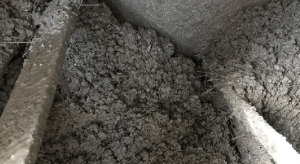
In shot-concrete, fiber-reinforcement is mainly used and in normal concrete, it can also be used. For on-ground floors and pavements, fiber-reinforced normal concrete is mostly used and can be considered for a wide range of construction parts like beams, pliers, foundations, etc. With many advantages, fiber reinforced concrete is of different types and properties.
Types of Fiber Reinforced Concrete:
- Steel Fiber Reinforced Concrete
- Polypropylene Fiber Reinforced Cement Mortar & Concrete
- Glass Fiber Reinforced Concrete
- Asbestos Fibers
- Carbon Fibers
- Organic Fibers
Steel Fiber Reinforced Concrete:
Like reinforcement, a number of steel fiber types are available like round steel fiber produced by cutting round wire into the short length and are commonly used type. In the range of 0.25mm to 0.75mm, the typical diameter lies and by silting the sheets about 0.25mm thick, steel fibers having a rectangular c/s are produced.
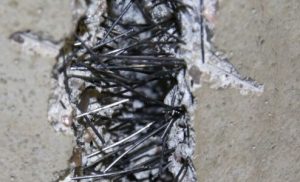
The diameter of wire varying from 0.3mm to 0.5mm has been practically used for fiber from mild steel and by cutting or chopping the wire round steel fibers are produced. By silting flat sheets, flat sheet fibers having a typical c/s ranging from 0.15mm to 0.41mm in thickness and 0.25mm to 0.90mm in width are produced.
There is also deformed fiber available which is loosely bounded with water-soluble glue in the form of a bundle.
Polypropylene Fiber Reinforced Cement Mortar & Concrete:
Polypropylene is abundantly available polymers and one of the cheapest. To most chemical, polypropylene fibers are resistant and its melting point is high about 165 degrees centigrade.
They do not need lengthy contact during mixing and only need to be evenly distressed in the mix so polypropylene fibers being hydrophobic can be easily mixed.
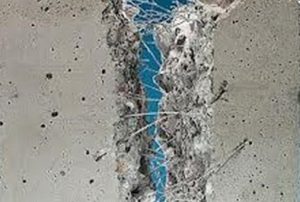
In concrete, polypropylene short fibers in small volume fractions between 0.5 to 15 are commercially used.
Glass Fiber Reinforced Concrete:
From 200 to 400 individual filaments that are lightly bonded to make up a stand glass fiber is made and these stands can be combined to make cloth mat or tape or can be chopped into various lengths. It is not possible to mix more than about 2% by volume of fibers of a length of 25mm by using the conventional mixing techniques for normal concrete.
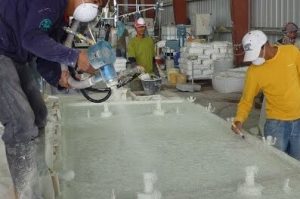
In the production of thin-sheet products, it is used and the major appliance of glass fiber has been in reinforcing the cement or mortar matrices. There are the following commonly used verities of glass fibers such as AR glass and E-glass. AR-glass has improved alkali-resistant characteristics and E-glass has inadequate resistance to alkalis present in Portland cement. To improve some physical properties such as moisture movement sometimes polymers are also added in the mixes.
Asbestos Fibers:
To form a widely used product called asbestos cement, the naturally available inexpensive mineral fiber and asbestos have been successfully combined with Portland cement paste.
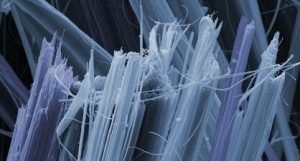
Asbestos fibers are thermal-mechanical & chemical resistant and for sheet product pipes, tiles, and corrugated roofing elements these are suitable. The fiber has low impact strength due to a relatively short length of about 10mm.
Carbon Fibers:
For commercial use, carbon fibers from the most recent & probability the most spectacular addition to the range of fiber are available and under the very high modulus of elasticity and flexural strength carbon fiber comes.
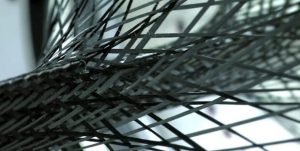
Carbon fibers are expensive and strength & stiffness characteristics have been found to be superior but they are more vulnerable to damage so with resigning coating these are generally treated.
Organic Fibers:
Organic fibers are cheaper and they are like polypropylene or natural fiber and to obtain a multiple cracking composite a large volume of vegetable fiber may be used. By adding a superplasticizer the problem of mixing and uniform dispersion may be solved.
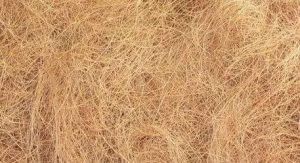
Factors Affecting Properties of Fiber Reinforced Concrete:
There are the following factors affecting the properties of fiber-reinforced concrete as given below;
Relative Fiber Matrix Stiffness:
For efficient stress transfer, the modulus of elasticity of matrix must be much lower than that of fiber. To give strength improvement, low modulus of fiber such as nylons and polypropylene are used and to give strength and stiffness to the composite high modulus fibers such as steel, glass, and carbon are used.
Aspect Ratio of the Fiber:
The aspect ratio of the fiber is an important factor that influences the properties and behavior of the composite. It has been reported that an increase in the aspect ratio increases the ultimate concrete linearly when up to an aspect ratio of 75 is used.
Size of Coarse Aggregate:
To avoid an appreciable reduction in strength of the composite maximum size of the coarse aggregate should be restricted to 10mm. As an aggregate fiber also act and their influence on the properties of fresh concrete is complex and friction between fibers and aggregates controls the orientation and consequently the properties of the composite and distribution of the fibers.
Mixing:
To avoid balling of fibers, segregation, and in general the difficulty of mixing the materials uniformly, mixing of fiber reinforced concrete needs careful conditions, and increase in the aspect ratio, volume percentage, and size, and quantity of coarse aggregate results in balling tendency and difficulties. It is very difficult to mix steel fiber content in excess of 2% by volume and aspect ratio of more than 100.
The Volume of Fiber:
On the number of fibers that are used, the strength of the composite largely depends on it, and the tensile strength and toughness of the composites increase with the increase in the volume of the fiber.
Properties of Fiber Reinforced Concrete:
There are the following needs of fiber reinforced concrete such as;
- The tensile strength of the concrete is increased by it.
- To creep, fibers like graphite and glass have excellent resistance.
- Reinforced concrete is a composite material where the concrete acts as the matrix and the reinforcement act as the strengthening fiber.
- The addition of uniformly dispersed fibers and small closely spaced concrete would substantially improve its static and dynamic properties and would act as a crack arrester.
- It increases the durability of the concrete and reduces the air voids and water voids.
Uses of Fiber Reinforced Concrete:
- On overlays of the airfield, road explosive resistant structures, and refractory lining, etc it is applied.
- For the fabrication of precast products like pipes, boats, beams, stair cased steps, wall panels, and roof panels, etc it is used.
- The glass fiber is used for doors and door frames, permanent and temporary formwork, pressure pipes, bus shelters.
